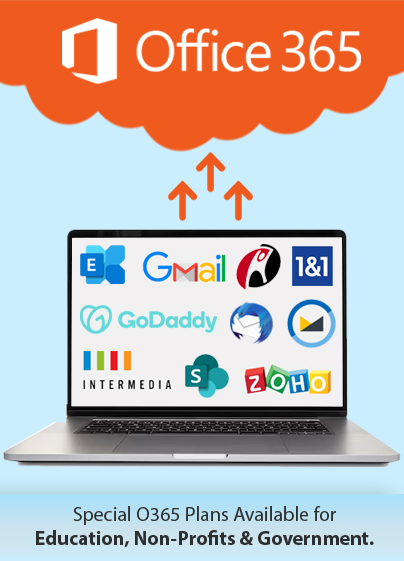How to Migrate from Mailfence to Office 365?
Emails form a significant part of any business or organization’s communication infrastructure. With this, come a lot of factors that need to be considered while choosing the most suitable email platform as per the needs of the users.
Mailfence and Office 365 are two such platforms that are known for their security features. However, it is observed that Mailfence users are shifting to Office 365 due to better and more advanced features and functions offered by the latter.
So, in this post, we have compiled a comprehensive guide to migrate from Mailfence to Office 365 all the while taking care of some careful considerations and challenges while migration.
What Is Mailfence?
Mailfence is one of the secure email providers. It is designed specifically for privacy and security-related concerns. Mailfence provides end-to-end encryption using OpenPGP, digital signatures, and other security features to protect data. It also supports various email protocols like SMTP, POP, and IMAP.
Users can choose storage and features based on their needs through the availability of different paid plans. Also, Mailfence allows API integration which helps in the automation of various tasks, such as creating and managing accounts, groups, and passwords.
All in all, the main focus of Mailfence is to provide a secure and private way for individuals and businesses to communicate over the Internet.
Why Should You Consider Office 365 Over Mailfence?
Being email and productivity suites, both Office 365 and Mailfence differ in some key features and functionality. This makes it essential to carefully consider before investing.
After analyzing both platforms, in this section of the blog, we have summarized below some points that explain why Office 365 is best suited for you:
- Real-Time Collaboration: Office 365 supports the integration of Word, Excel, PowerPoint, OneNote, and Microsoft Teams. This allows individuals, businesses, and organizations to collaborate with team members effectively in a real-time manner. These productivity tools form an essential part of today’s work environment which is not supported in Mailfence.
- Cloud Storage: Office 365 provides 1TB of OneDrive cloud storage per user while Mailfence allows the import of files up to only 100MB per email. This means that with Office 365, users do not have to rely on third-party services or local storage for syncing and backing up files.
- Mobile Apps: Office 365 has dedicated mobile apps for Outlook, Word, Excel, PowerPoint, OneDrive, and Microsoft Teams, whereas Mailfence relies on the native email, calendar, and contacts apps for syncing. These dedicated apps offer advanced features and functionalities to enhance productivity and efficiency to a much greater extent.
- Advanced Enterprise Features: Office 365 plans include advanced admin controls to manage users, devices, and security policies across the organization. It also provides advanced compliance tools to assess risks, protect sensitive data, and meet regulatory requirements. These features are important for large organizations that cannot rely on basic privacy and security-focused features.
- Aliases: Both Mailfence and Office 365 support email aliases, however, Office 365 offers more flexibility. Yes! You read that right! In addition to receiving emails, Office 365 also allows sending emails from aliases. Also, it does not require any separate filter to sort email aliases as Office 365 keeps them in the primary inbox only.
Steps for Migrating Emails from Mailfence to Office 365
- Step 1: Export your data (emails, contacts, calendar events) from Mailfence using built-in export features. You can export data in various formats such as CSV, PST, or EML.
- Step 2: Use the built-in import feature of Office 365 and import the file you just exported from Mailfence in the first step.
- Step 3: Configure your mail clients such as Outlook to connect to Office 365. This will ensure that you can access emails and calendars without facing any issues.
Challenges During Mailfence to Office 365 Email Migration
While migrating from Mailfence to Office 365 by any of the above methods, there are some challenges and considerations users may encounter. Some of them are listed below:
- Mailfences uses a data format different from Office 365. This means you need to first convert the data before starting the migration process. For instance, PST to EML or CSV files.
- Usually, a large amount of data and large files are difficult to migrate. These may require additional time and resources to complete the migration. So, plan the migration process accordingly.
- If you are using third-party tools, then there will be additional costs for migration. Ensure that you have enough budget for the same.
- There might be chances of data loss during the migration. To minimize this risk, make sure that you have a backup plan to save and protect your data.
- Configuring your domain with Office 365 might be a complex process. For this, check that you have the necessary DNS settings and MX records in place.
Apps4Rent Can Help with Mailfence to Office 365 Migration
Though the main purpose of Mailfence is to provide strict privacy and security to your email and data, Office 365 still outshines it in many ways. This makes it the most preferable and reliable email platform among business entities and organizations.
The migration process may seem simple in a few steps, but it requires careful planning and consideration. This is because it has to deal with your important data and you cannot risk it anyway. Well, you will agree on this point!
So, to make sure everything goes smoothly, Apps4Rent is here to your rescue. As a Microsoft Solutions Partner, Apps4Rent specializes in different types of email migrations and one among them is Mailfence to Office 365.
You can contact the team via call, chat, or email. The years of experience and expertise will help and guide you at every step by carefully monitoring and assessing each move.
Apps4Rent – Tier 1 Office 365 Cloud Solution Provider


